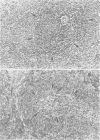Abstract
Hyperglycemia, hypoinsulinemia and ketonemia often develop abruptly in previously normal young "BB" rats. The syndrome mimics human juvenile diabetes closely and is, thus, appropriate for assessing pancreatic transplantation. Transplantation of islet cells from closely histocompatible Wistar Furth (WF) donor resulted in permanent normoglycemia when immunosuppression with ALS was given. However, when islet cells from nondiabetic "BB" donors were transplanted to nonimmunosuppressed diabetic "BB" recipients, only transient normoglycemia followed. Transplantation of WF islets cells also failed in diabetic "BB" rats which were tolerant of WF antigens, again suggesting destruction of transplanted islet cells by the original disease process-possibly autoimmunity. Evidence for autoimmunity was strengthened by the finding that newly diabetic "BB" rats could be rendered normoglycemic by immunosuppression. Since genetic susceptibility to spontaneous autoimmune diabetes is unique to some members of the "BB" stock, an attempt was made to alter their vulnerability by modifying their cellular immune system. Accordingly, 50 million bone marrow cells from WF donors were inoculated into half the newborn members of "BB" litters, leaving the littermates as unmodified controls. Most bone marrow recipients were protected, only four of 37 (10.8%) ever becoming diabetic, while the incidence of diabetes in noninoculated littermates was 22 of 39 (56.4%). The ultimate goal in human diabetes, which also seems very likely to be an autoimmune disease, may not be replacement of destroyed islet cells but identification of potentially susceptible children and prevention of islet destruction by immunologic manipulation.
Full text
PDF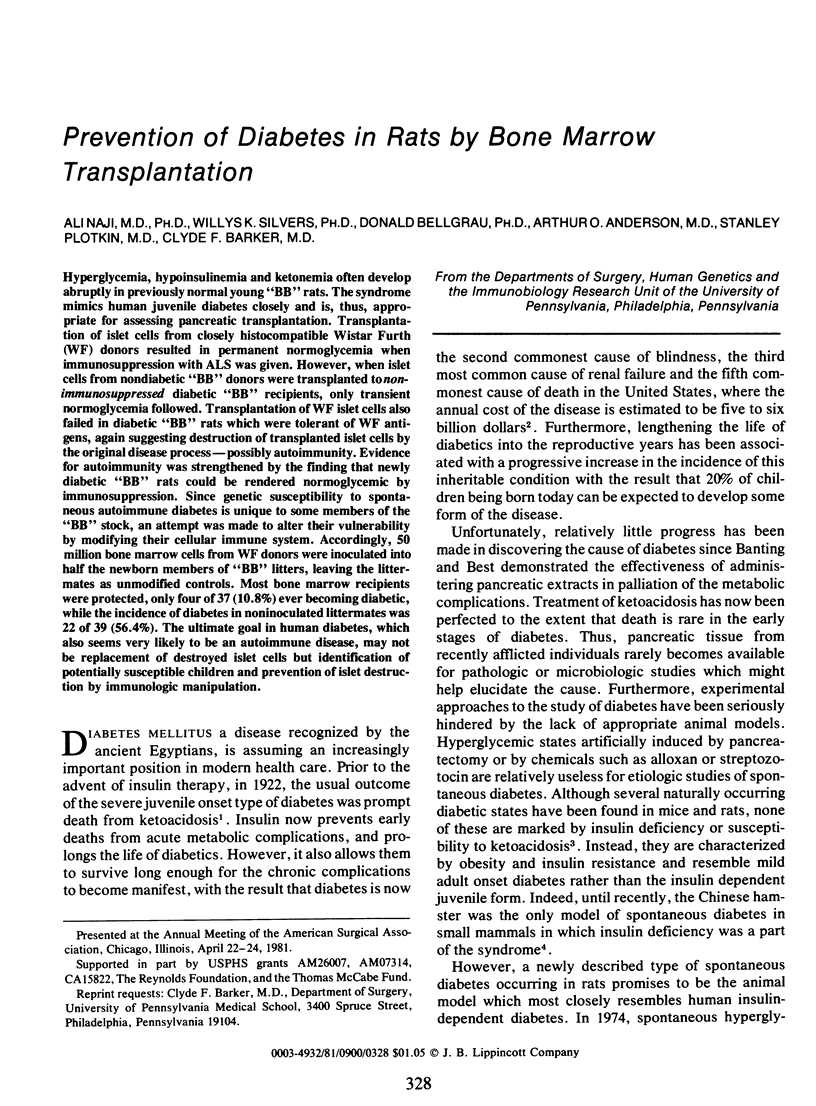
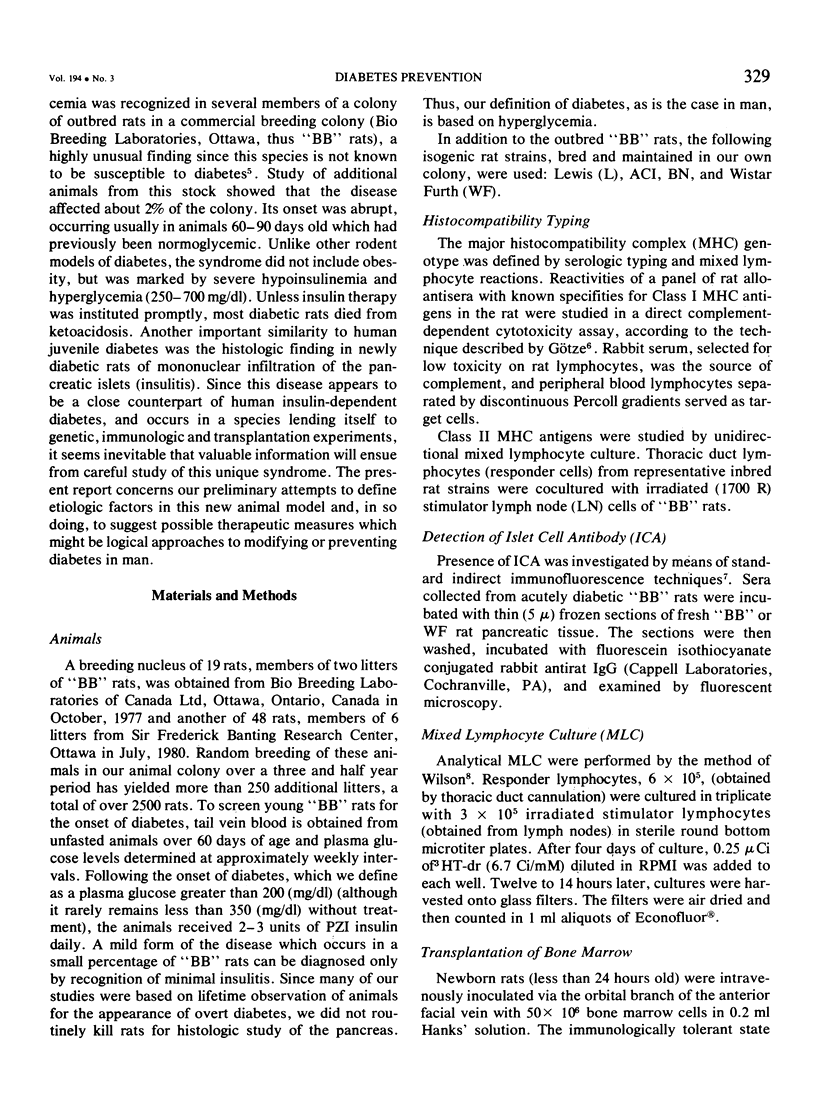
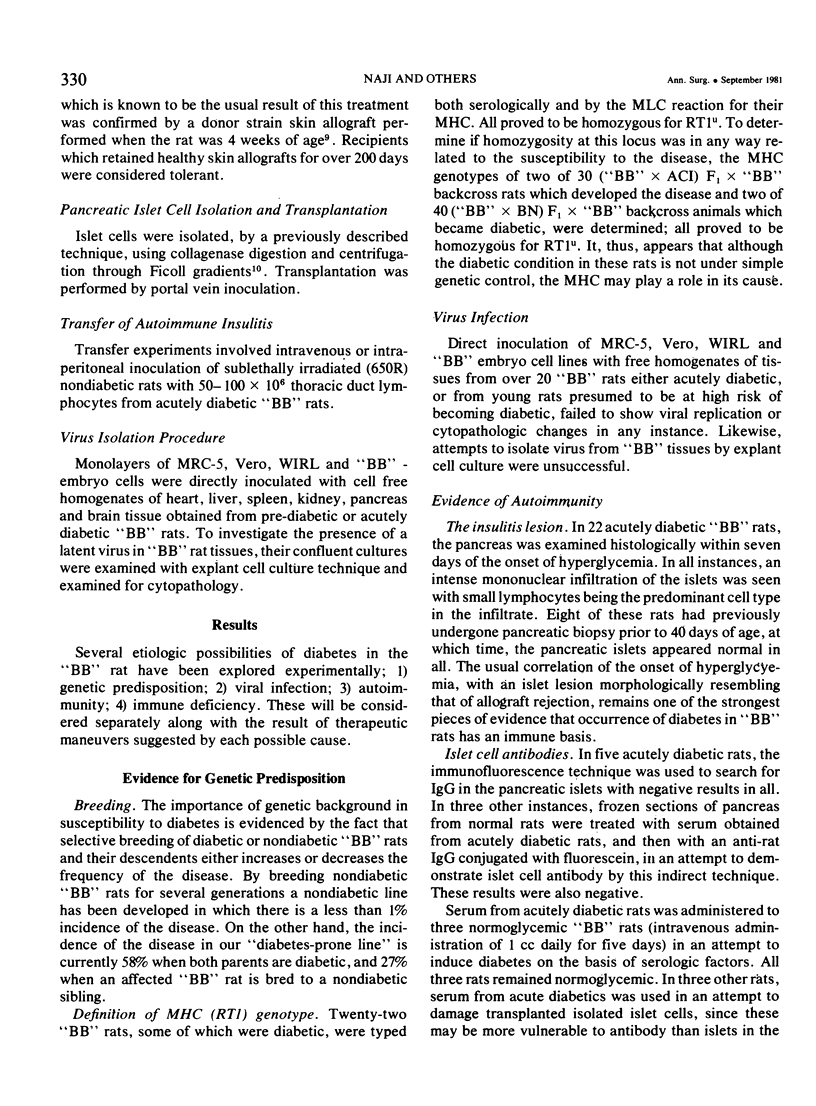
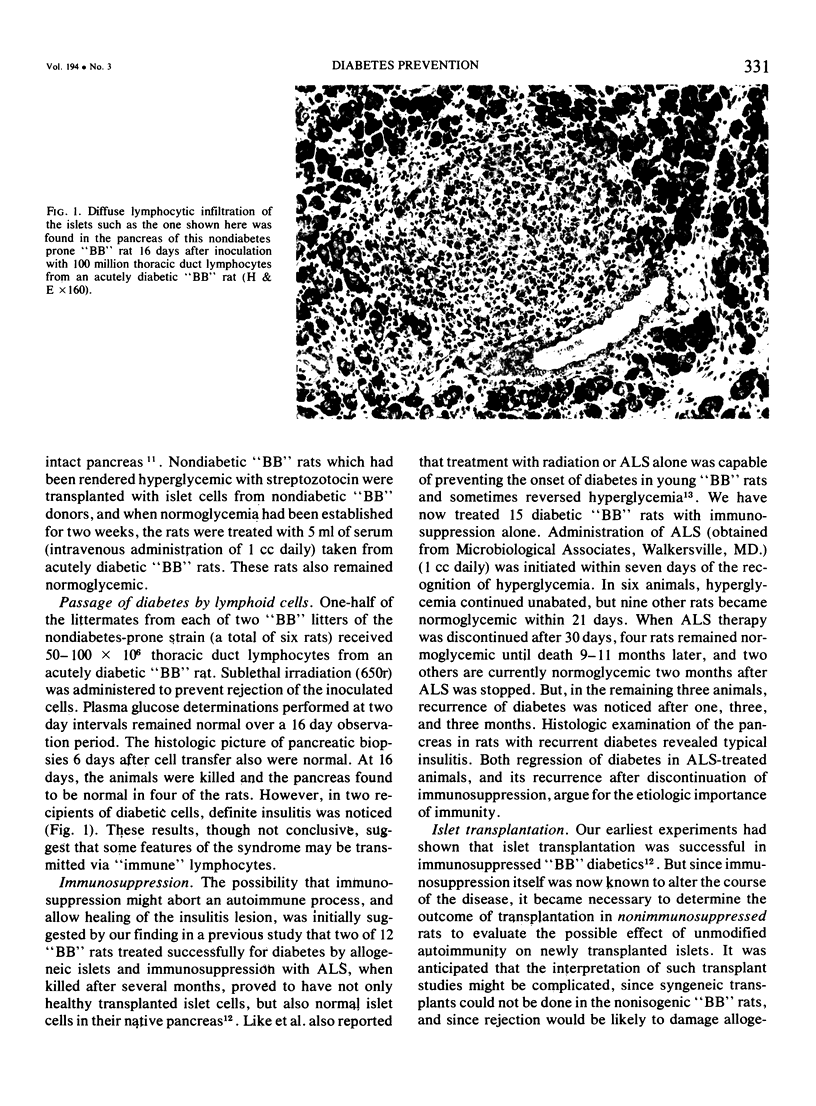
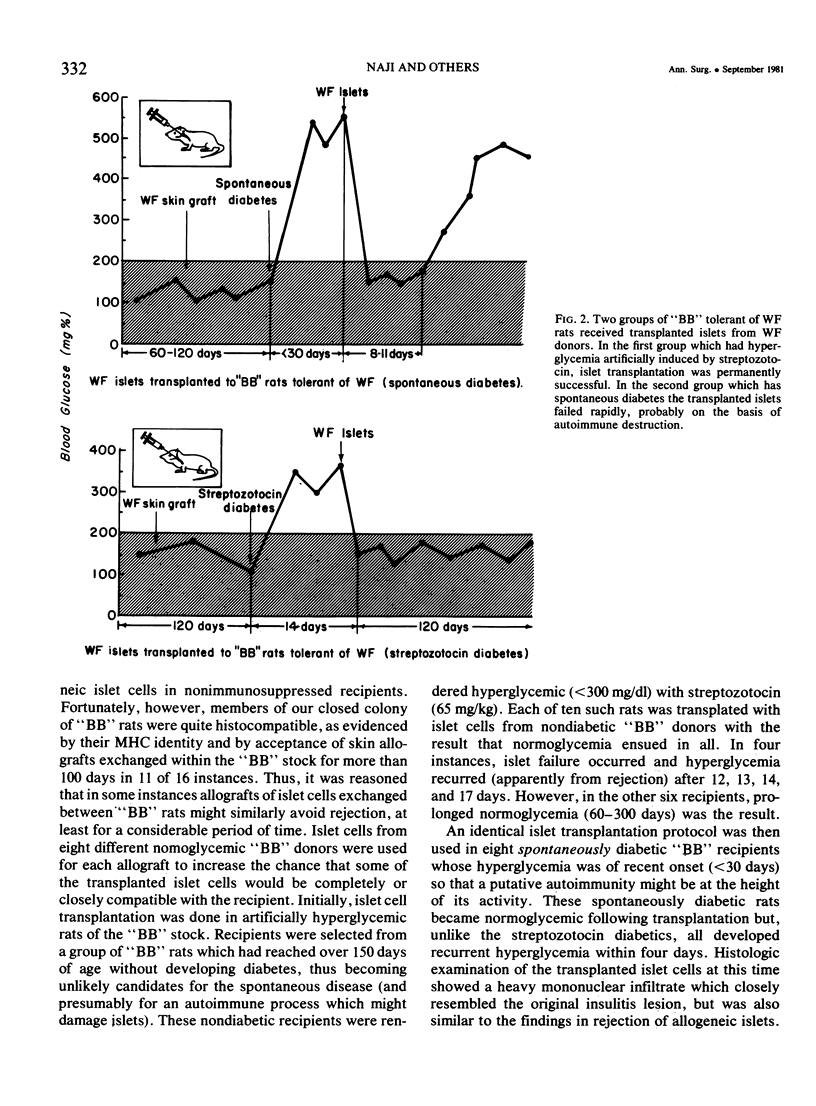
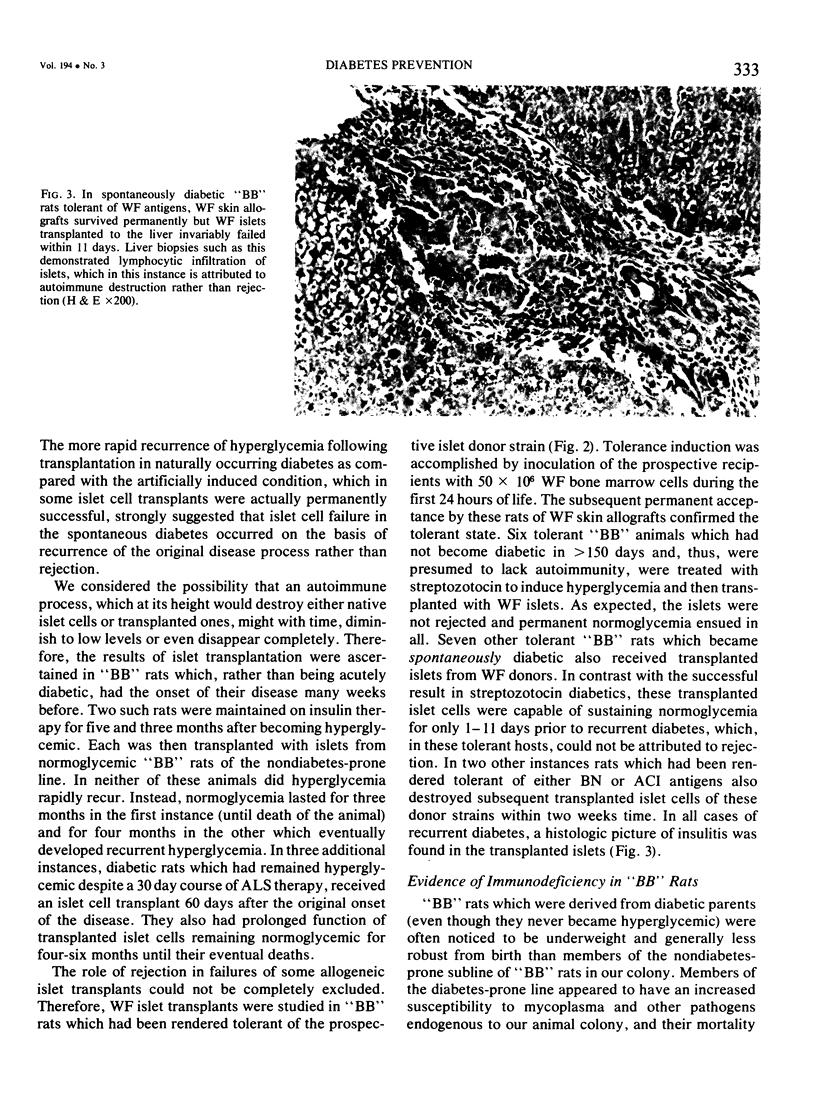
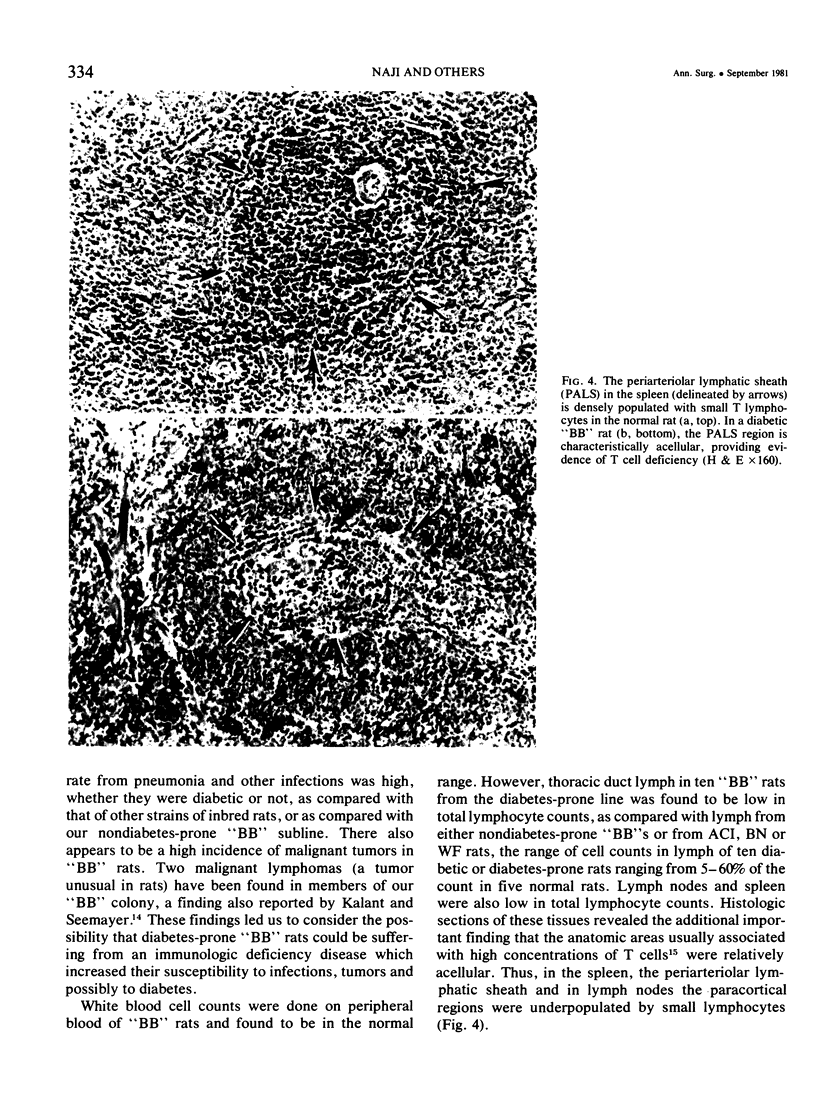
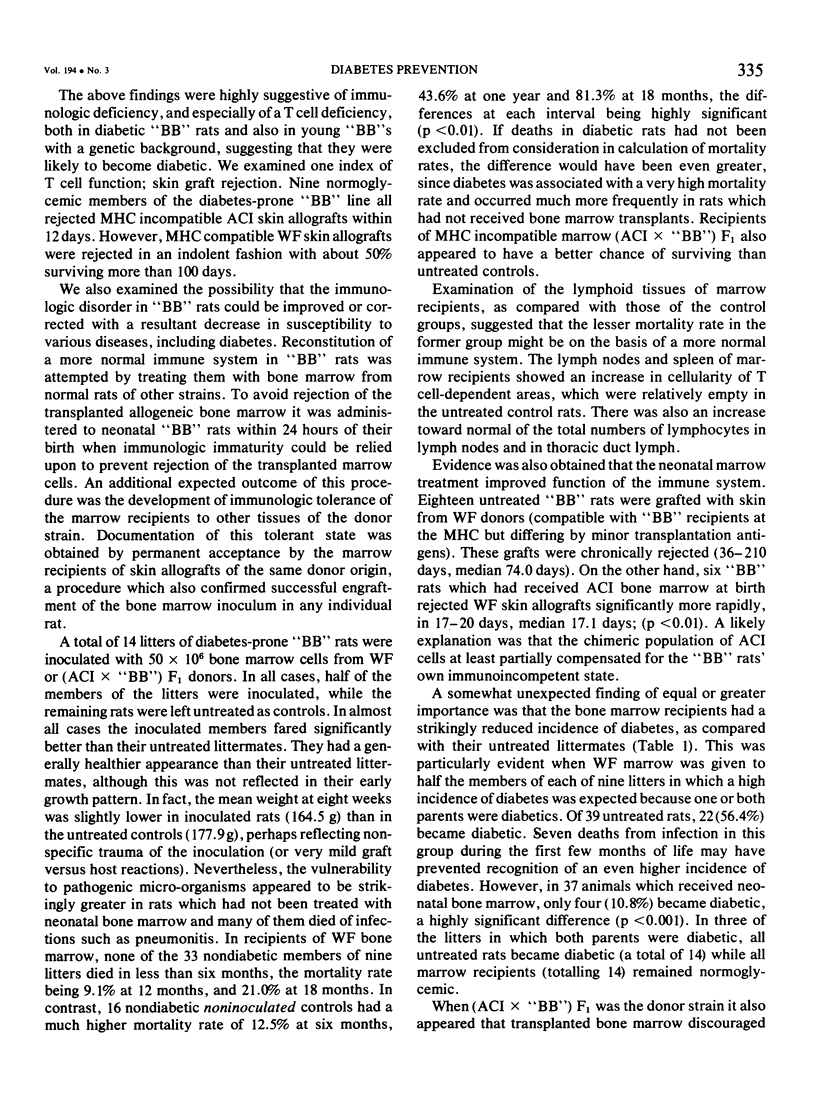
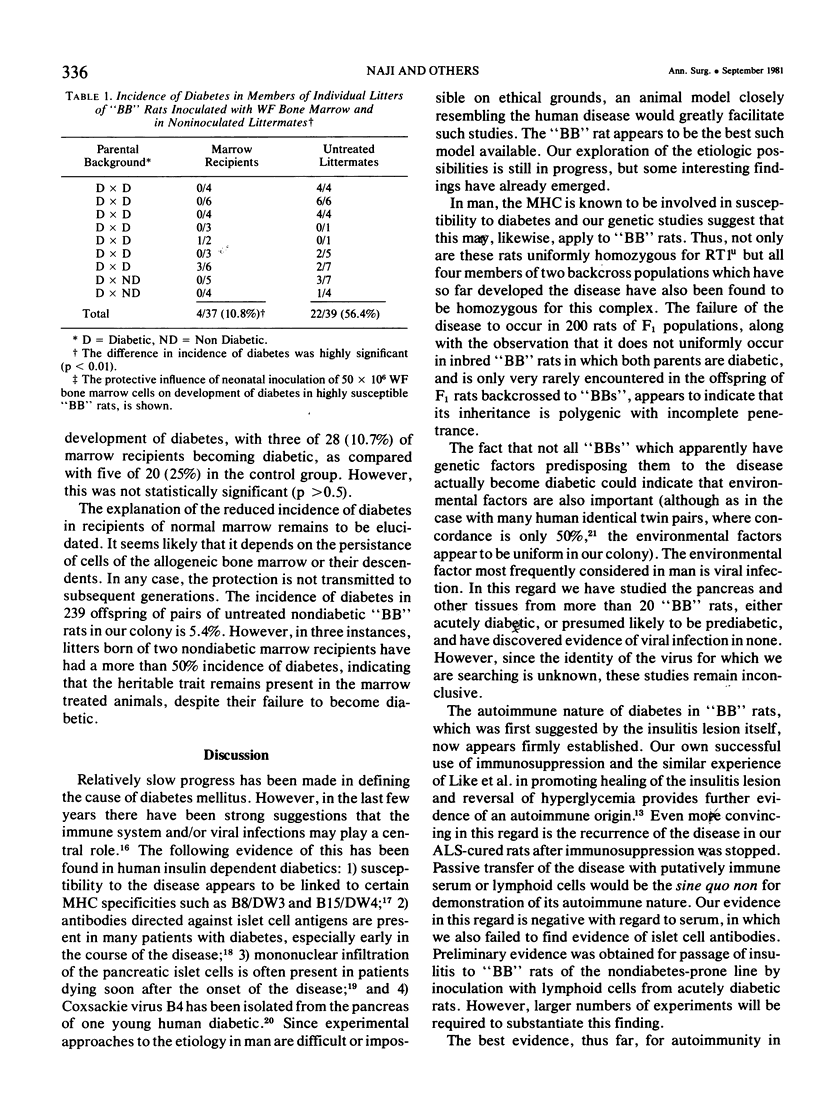
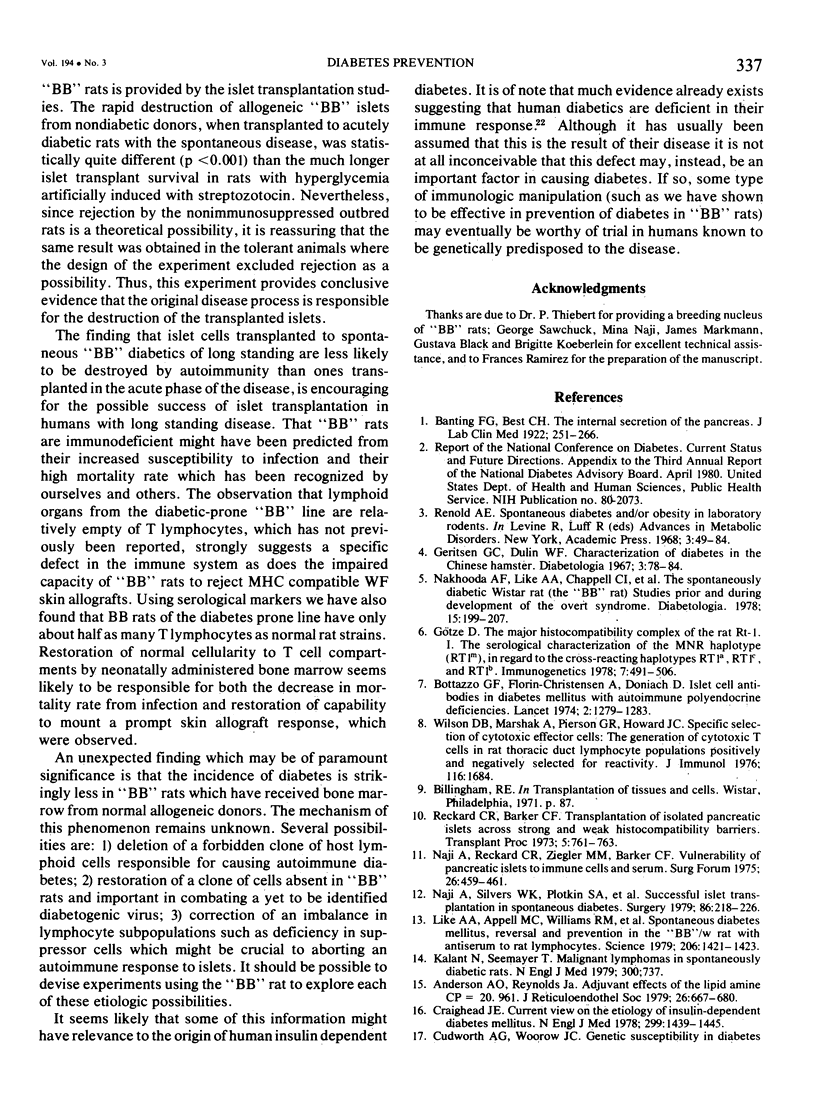
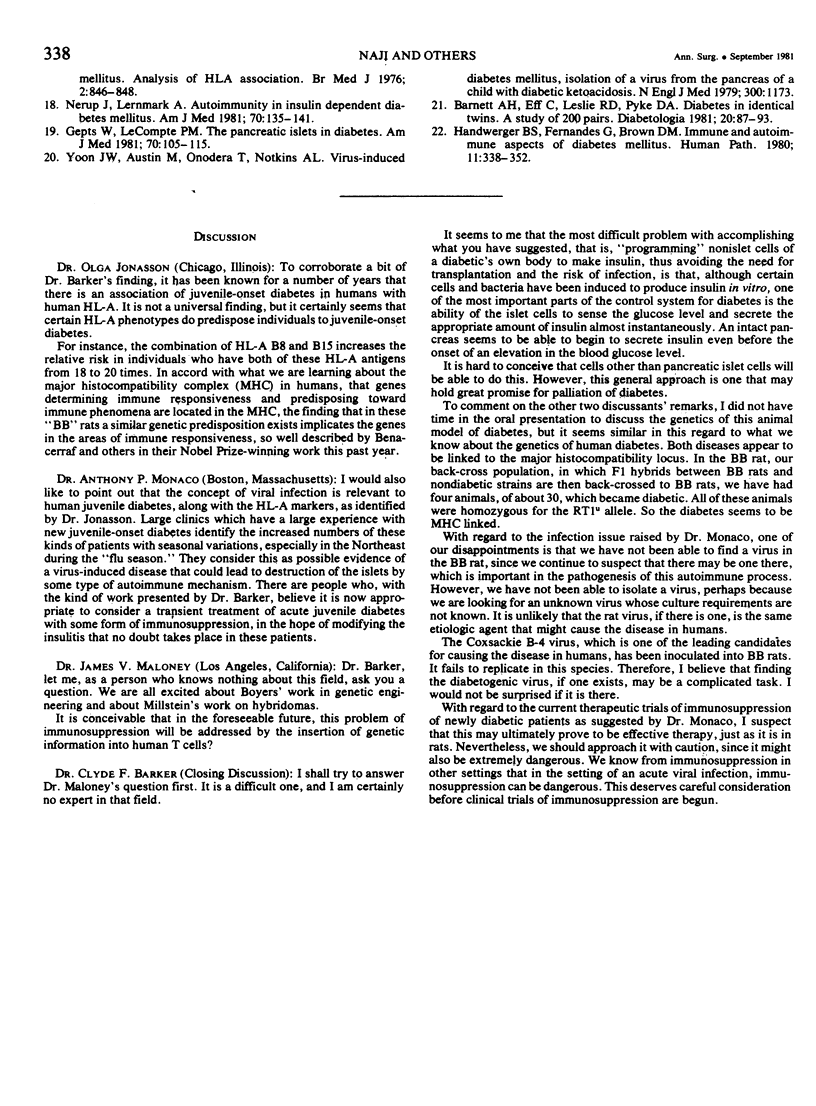
Images in this article
Selected References
These references are in PubMed. This may not be the complete list of references from this article.
- Anderson A. O., Reynolds J. A. Adjuvant effects of the lipid amine CP-20,961. J Reticuloendothel Soc. 1979 Dec;26(Suppl):667–680. [PubMed] [Google Scholar]
- Barnett A. H., Eff C., Leslie R. D., Pyke D. A. Diabetes in identical twins. A study of 200 pairs. Diabetologia. 1981 Feb;20(2):87–93. doi: 10.1007/BF00262007. [DOI] [PubMed] [Google Scholar]
- Bottazzo G. F., Florin-Christensen A., Doniach D. Islet-cell antibodies in diabetes mellitus with autoimmune polyendocrine deficiencies. Lancet. 1974 Nov 30;2(7892):1279–1283. doi: 10.1016/s0140-6736(74)90140-8. [DOI] [PubMed] [Google Scholar]
- Craighead J. E. Current views on the etiology of insulin-dependent diabetes mellitus. N Engl J Med. 1978 Dec 28;299(26):1439–1445. doi: 10.1056/NEJM197812282992605. [DOI] [PubMed] [Google Scholar]
- Gepts W., Lecompte P. M. The pancreatic islets in diabetes. Am J Med. 1981 Jan;70(1):105–115. doi: 10.1016/0002-9343(81)90417-4. [DOI] [PubMed] [Google Scholar]
- Gerritsen G. C., Dulin W. E. Characterization of diabetes in the Chinese hamster. Diabetologia. 1967 Apr;3(2):74–84. doi: 10.1007/BF01222182. [DOI] [PubMed] [Google Scholar]
- Handwerger B. S., Fernandes G., Brown D. M. Immune and autoimmune aspects of diabetes mellitus. Hum Pathol. 1980 Jul;11(4):338–352. doi: 10.1016/s0046-8177(80)80030-x. [DOI] [PubMed] [Google Scholar]
- Kalant N., Seemayer T. Malignant lymphoma in spontaneously diabetic rats. N Engl J Med. 1979 Mar 29;300(13):737–737. doi: 10.1056/NEJM197903293001318. [DOI] [PubMed] [Google Scholar]
- Like A. A., Rossini A. A., Guberski D. L., Appel M. C., Williams R. M. Spontaneous diabetes mellitus: reversal and prevention in the BB/W rat with antiserum to rat lymphocytes. Science. 1979 Dec 21;206(4425):1421–1423. doi: 10.1126/science.388619. [DOI] [PubMed] [Google Scholar]
- Naji A., Reckard C. R., Ziegler M. M., Barker C. F. Vulnerability of pancreatic islets to immune cells and serum. Surg Forum. 1975;26:459–461. [PubMed] [Google Scholar]
- Naji A., Silvers W. K., Plotkin S. A., Dafoe D., Barker C. F. Successful islet transplantation in spontaneous diabetes. Surgery. 1979 Aug;86(2):218–226. [PubMed] [Google Scholar]
- Nakhooda A. F., Like A. A., Chappel C. I., Wei C. N., Marliss E. B. The spontaneously diabetic Wistar rat (the "BB" rat). Studies prior to and during development of the overt syndrome. Diabetologia. 1978 Mar;14(3):199–207. doi: 10.1007/BF00429781. [DOI] [PubMed] [Google Scholar]
- Nerup J., Lernmark A. Autoimmunity in insulin-dependent diabetes mellitus. Am J Med. 1981 Jan;70(1):135–141. doi: 10.1016/0002-9343(81)90420-4. [DOI] [PubMed] [Google Scholar]
- Reckard C. R., Barker C. F. Transplantation of isolated pancreatic islets across strong and weak histocompatibility barriers. Transplant Proc. 1973 Mar;5(1):761–763. [PubMed] [Google Scholar]
- Yoon J. W., Austin M., Onodera T., Notkins A. L. Isolation of a virus from the pancreas of a child with diabetic ketoacidosis. N Engl J Med. 1979 May 24;300(21):1173–1179. doi: 10.1056/NEJM197905243002102. [DOI] [PubMed] [Google Scholar]





